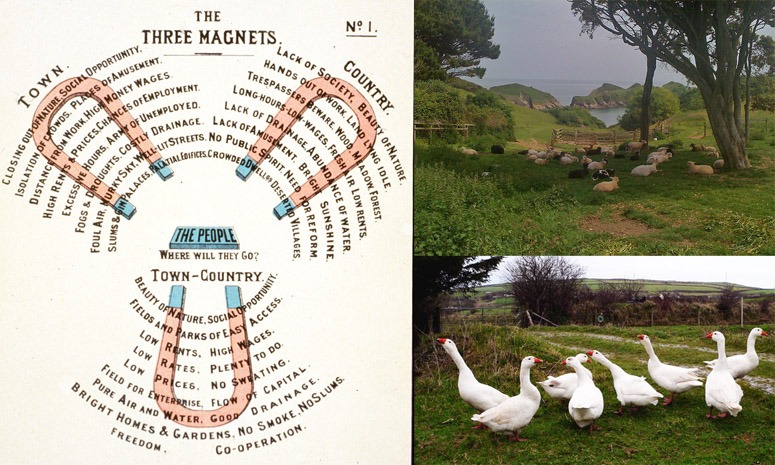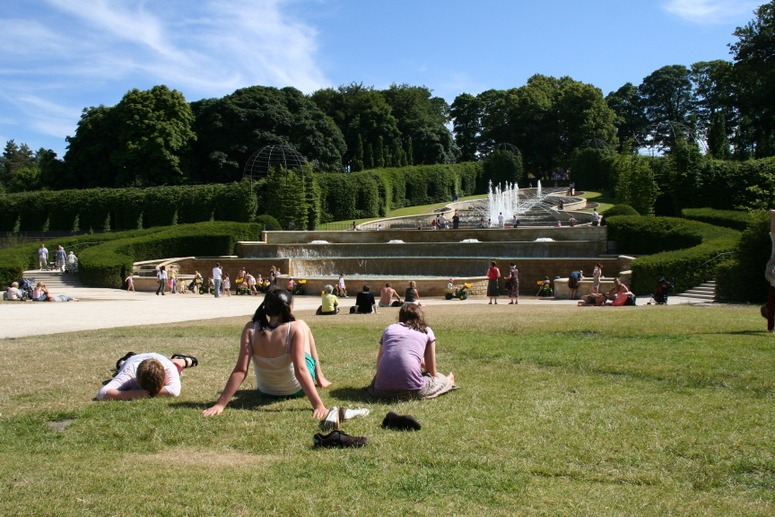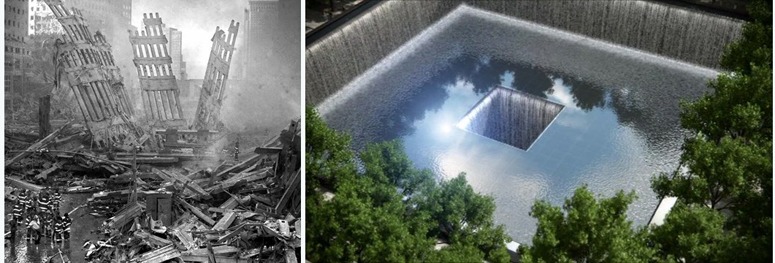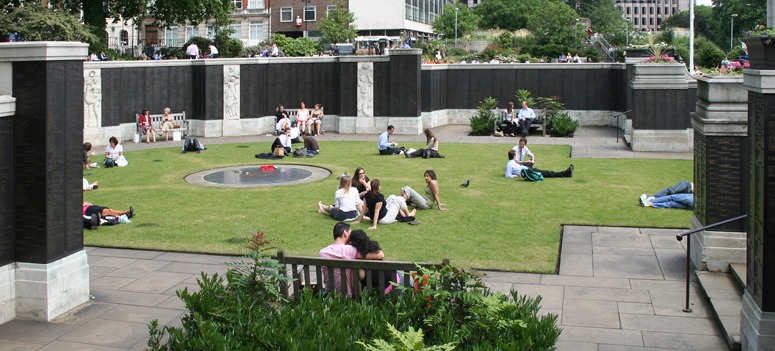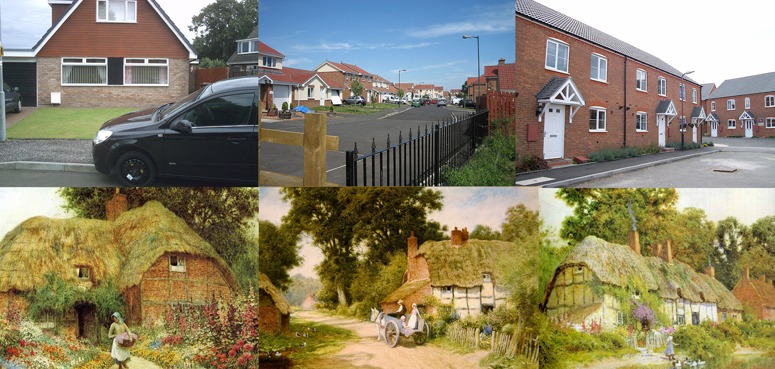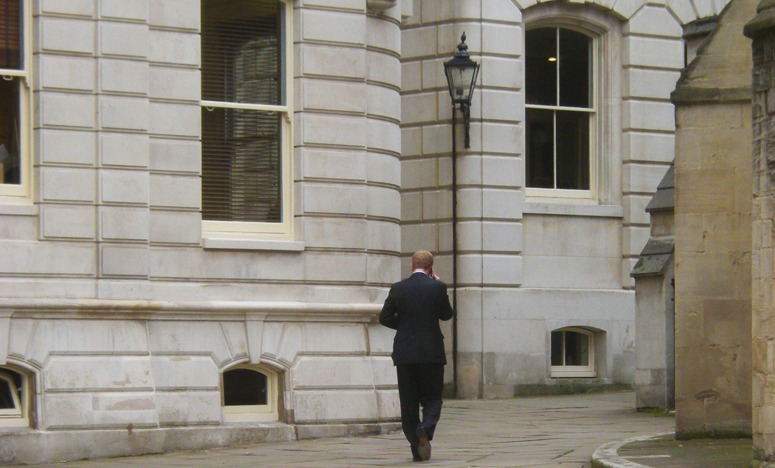
As this man walked past me I heard him bark into his mobile phone ‘I could pay the mortgate on a 5-bedroom farm in Devon for what I’m paying to rent in London’ (the photograph was taken outside the Temple Church, made famous by Dan Brown’s Da Vinci Code, in the Inns of Court). Joel Garreau, in Edge City: Life on the New Frontier, 1991, suggested that the South of England from Dover to Bristol is effectively one large Edge City. That city is pushing into the West Country, with steep increases in property prices. The internet allows skilled residents to particpate in the knowledge economy while enjoying a peaceful landscape. This was, of course, Ebenezer Howard’s Garden City dream. Is the country made more or less sustainable when knowledge workers move out of London?
Author Archives: Tom Turner
The Alnwick Garden, Jacques Wirtz and Tadao Ando
My view is that Jacques Wirtz is a good designer but that most of the work was done by his sons. I believe one son holds a qualification in landscape architecture from what is now the Erasmushogeschool in Brussels, and was regarded as a weak student. The other son is an agricultural engineer. Caveat emptor. The Duchess made a big mistake in not appointing Tadao Ando, who was invited to Alnwick. Ian August’s book reports the conversation with Ando. He said ‘”I want to design this whole garden myself. In my opinion, there is no great garden designer alive today” – this sitting next to Jacques Wirtz – “and no great garden has been built in the last hundred years”. We sat, stunned. The insult to the Wirtzes was worse for being so casually delivered, but Ando seemed oblivious’. The simple truth is that Ando, who trained as a carpenter, not an architect, is a great designer and, with help, could have done a really great job. Instead of this, the Duchess has what might be a display garden for an upmarket garden centre and ‘leisure attraction’. The lesson is that a good client, when ‘stunned’ by a good designer, should pause for thought. A week’s meditation in a hotel designed by Tadao Ando might helped to concentrate her mind.
A landscape memorial to Saddam Hussein's "Victory" over the Marsh Arabs who lived in the Garden of Eden
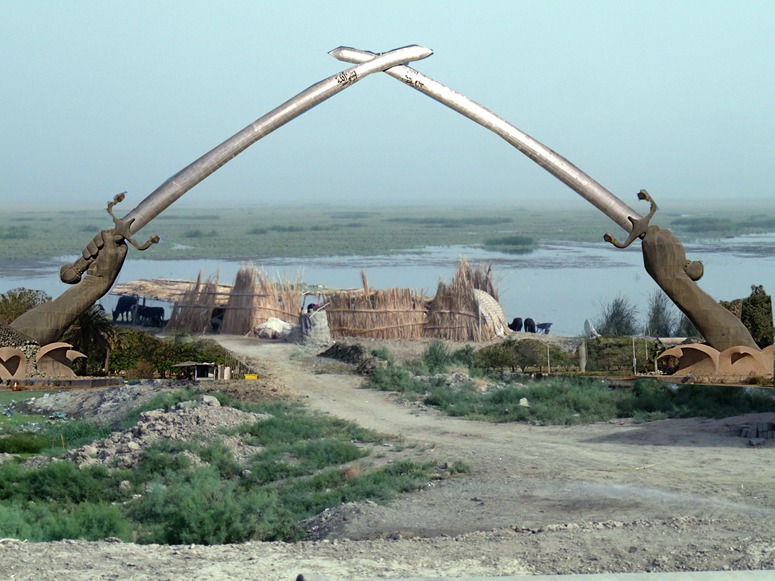
Saddam Hussein’s Victory Arch in Baghdad is being restored – with mixed feelings among commentators. Meanwhile, the habitat of the Marsh Arabs is also being restored. But the Marshes, which are often identified as the geographical location of the Garden of Eden story, now have only a few thousand inhabitants instead of the half-million who lived there before the wicked Saddam Hussein drained the marshes. My proposal is to make an area of marshland around the Victory Arch in Baghdad to symbolise the victory of the wetlands over the dictator. It could also create a tourist attraction, a wildlife resort, a water management facility and a recreation area for the oppressed people of Baghdad. The name of the city could mean Bag “god” + dād “given”, translating to “God-given” or “God’s gift”. Or it could mean Bağ “garden” + dād “fair”, translating to “The fair Garden”.
Images courtesy pennstatelive james_gordon_los_angeles
9/11 Memorial Landscape Architecture
Since the minimalist squares of the 9/11 memorial are Platonic Forms, they seem closer to God than to Man. Plato’s forms were the universal perfect shapes which must exist before any particular forms can exist on earth. Does their use in a sunk space indicate that the victims of the 9/11 atrocity are destined for a perfect world? Or are they symbols that Death, Revenge and Destruction may also be Platonic Forms which shape the world? If the squares were simply the outlines of the Twin Towers they could be historical traces, like the outline of the old fortress on the Place de la Bastille in Paris. Repetition of the square motif with the pools makes them Platonic forms in my eyes.
Judging only from the photographs, I think the 9/11 Memorial is very beautiful and very moving. Its sustainability credentials are also admirable. But should it be a memorial to human folly, not to the essential eternal wonder of the creation. The pile of rubble on the right-hand photograph would have been a good aid to remembering the tragedy. If it was too dangerous and too big then it could have been 3D-scanned and cast it in steel salvaged from the ruins, at a reduced scale.
There are always other ways of looking at memorials. The 9/11 attack was a disaster from every point of view, injuring both the cause of the attackers and the cause of the attacked. My view is that the Americans should have behaved like a Christian nation and, with the greatest heroism, turned the other cheek. This would have made an immense contribution to the Christian virtues of purity, forbearance, ethical conduct and the rule of law. So I recommend the following interpretation of the 9/11 Memorial: it is a symbol of the lofty idealism for which everyone admires America at its best. It tells us how the nation should have responded to the 9/11 attack. A peaceful response might have dealt a crushing blow to terrorism everywhere, showing that sacrifice purifies the victim and vilifies the perpetrators. This would remind us that the War on Terror was a misconceived and badly executed blunder. So the deep truth in the 9/11 Memorial would be ‘Forgive us, O Lord, for we knew not what were about to do’.
Michaelangelo's David considers the history of planting design and wonders if the LCHF diet would help the obesity epidemic
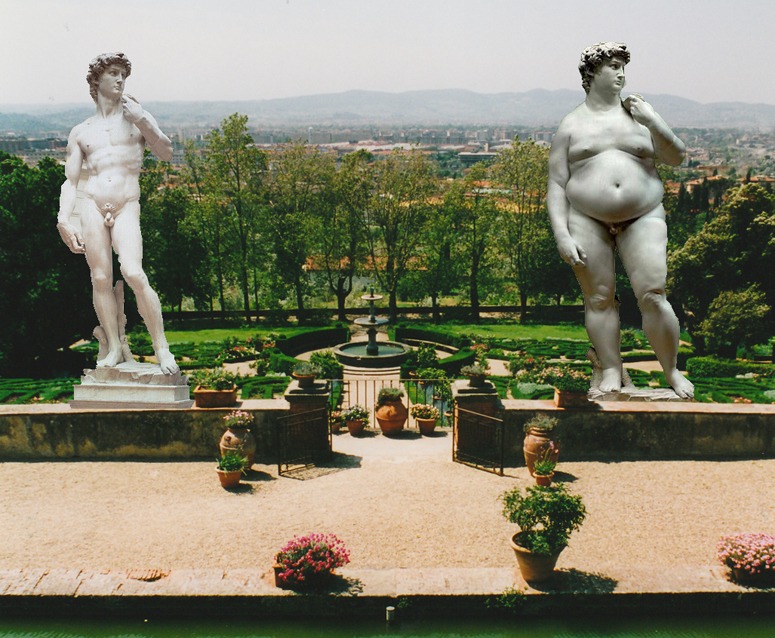
Michaelangelo’s David has wandered from his usual haunt, outside the Palazzo della Signoria in Florence, to visit the nearby garden of the Villa La Petraia. Looking west, he sees his American cousin, Dave, and wonders why he eats so much bread, candy and icecream, and why he has grown so fat, and why he has diabetes and heart disease. The trouble, David concludes, is that so many of his male contemporaries, despite their admiration for his lean figure, became interested in the aesthetic aspect of garden design. In Michaelangelo’s day, the main use of gardens was to grow vegetables and herbs, to flavour the fresh meat hunted on the hills around Florence, and fresh fruit, to eat as a desert. The Baroque style originated in Italy, but was developed in France and then returned to influence Italy. The old beds of fruit, herbs and vegetables then became ornamental and were laced with the clipped box hedges we see in Italian gardens today. Italian nobles turned away from their ‘Palaeolithic’ diet of meat, vegetables and herbs. Instead, they began to stuff themselves with pasta. Baroque navigation took Europeans to the Americas and by the late twentieth century Americans were stuffing themselves with pizza, hamburgers, candy and sweet soft drinks. This gave them the characteristic Dave figure, also seen at Villa La Petraia. Luckliy, Dr. Eenfeldt,, from Sweeden has given the Americans an excellent lecture on the Low Carb High Fat (LCHF) diet and you can see it on Youtube. See also: Sugar may be the world’s worst poison – so the EU subsidises sugar growers through its Common Agricultural Policy (CAP)
Housing landscape architecture and planning
Would you rather live in the top row houses or the lower row houses? The top row gives you central heating, indoor toilets and no rising damp, no earwigs and few spiders. The lower row gives you peace, beauty, calm and sustainability.
The obvious thought is ‘Why can’t I have both?’ Well, perhaps you can, and modernising the lower row would probably be easier than de-modernising the top row. I think something went terribly wrong with the system which lays out new housing estates in the UK. The architecture is mundane but liveable. The external landscape is ghastly: too much roadspace, too much wasted land, too much impermeability, too many planning regulations, too much ugliness, too much engineering, too little sustainability, too little landscape architecture, mouldy little strips of ‘garden’. We need a housing revolution. The vested interests which control the system should be treated better than middle eastern dictators, but overthrown. Though not innocent, I do not see the motor car as the villain of the piece.
Images of British housing estates courtesy of : lydiashiningbrightly dkohara jimmy_macdonald

